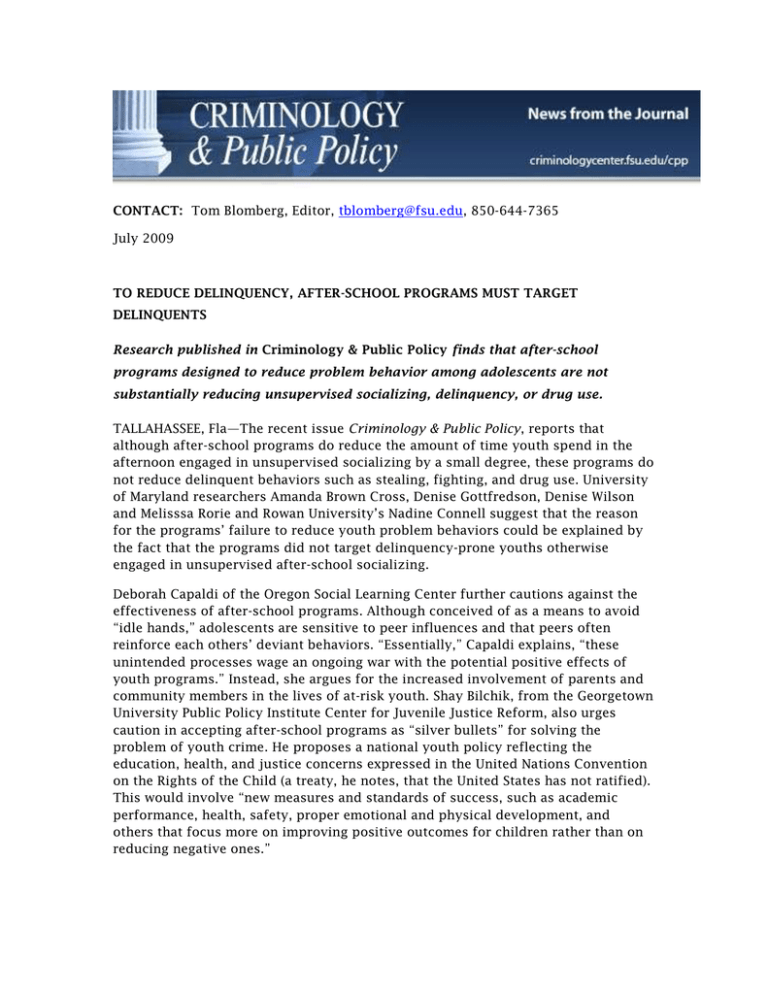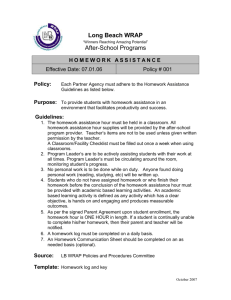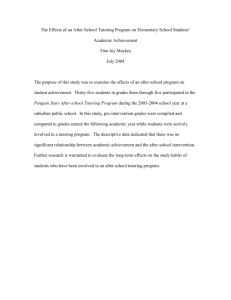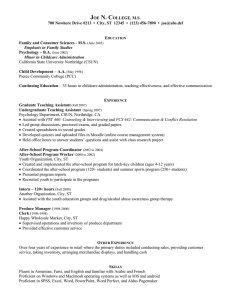After School Programs Press Release
advertisement

CONTACT: Tom Blomberg, Editor, tblomberg@fsu.edu, 850-644-7365 July 2009 TO REDUCE DELINQUENCY, AFTER-SCHOOL PROGRAMS MUST TARGET DELINQUENTS Research published in Criminology & Public Policy finds that after-school programs designed to reduce problem behavior among adolescents are not substantially reducing unsupervised socializing, delinquency, or drug use. TALLAHASSEE, Fla—The recent issue Criminology & Public Policy, reports that although after-school programs do reduce the amount of time youth spend in the afternoon engaged in unsupervised socializing by a small degree, these programs do not reduce delinquent behaviors such as stealing, fighting, and drug use. University of Maryland researchers Amanda Brown Cross, Denise Gottfredson, Denise Wilson and Melisssa Rorie and Rowan University’s Nadine Connell suggest that the reason for the programs’ failure to reduce youth problem behaviors could be explained by the fact that the programs did not target delinquency-prone youths otherwise engaged in unsupervised after-school socializing. Deborah Capaldi of the Oregon Social Learning Center further cautions against the effectiveness of after-school programs. Although conceived of as a means to avoid “idle hands,” adolescents are sensitive to peer influences and that peers often reinforce each others’ deviant behaviors. “Essentially,” Capaldi explains, “these unintended processes wage an ongoing war with the potential positive effects of youth programs.” Instead, she argues for the increased involvement of parents and community members in the lives of at-risk youth. Shay Bilchik, from the Georgetown University Public Policy Institute Center for Juvenile Justice Reform, also urges caution in accepting after-school programs as “silver bullets” for solving the problem of youth crime. He proposes a national youth policy reflecting the education, health, and justice concerns expressed in the United Nations Convention on the Rights of the Child (a treaty, he notes, that the United States has not ratified). This would involve “new measures and standards of success, such as academic performance, health, safety, proper emotional and physical development, and others that focus more on improving positive outcomes for children rather than on reducing negative ones.” Marvin Krohn, University of Florida professor and senior editor for the research series, is skeptical that research evidence like the findings reported by Cross and colleagues will influence the conventional wisdom that “idle hands are the devil’s workshop” and so increased adolescent activities alone are capable of preventing juvenile delinquency. He points out that research has documented the need for parental involvement, community participation, and holistic prevention programs but the government continues to fund programs without these components. He suggests that officials avail themselves of well-done evaluation studies like the work of Cross et al. and accordingly direct funding to those programs that have a higher likelihood of success. ###





